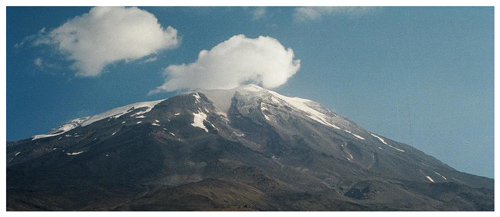
Nikolai Nikogosyan, photo by Boris Dolmatovsky, 1995



The famous Russian artist Nikolai Nikogosyan (Николай Никогосян) was born on December 2, 1918, in the small village of Mets Shagriar (now Nalbandyan) in the Ararat valley of Armenia, 30 miles west of Yerevan. At that time, a small Armenian state established on May 28, 1918 was still independent; however, two years later its territory was divided between Turkey and the Russian Federation. In 1922, the eastern part of the Armenian state became a part of the Soviet Union as the Armenian Soviet Socialist Republic.
His family name Nikogosyan (from the Russian transcription) is more correctly translated into English from Armenian as Nikoghosyan i.e. son of Nikoghos (Nikolai), or simply as Nicholson.
The father of Nikolai Nikogosyan, Bagrat Nikogosyan was a farmer. He grew cotton in the Ararat valley and had a family of six children. Apart from that, he opened a clothes shop in his village and became rather wealthy. However, in 1929 he was denounced as a “kulak” (a farmer using hired labour). As at this time such people were considered as counter-revolutionary, he was stripped of his private land. After that, he moved to Yerevan (capital of Soviet Armenia). To survive and support his family, he was forced to enter the construction business. However, for young Nikolai it was a chance to escape hard peasant labour. In Yerevan, he worked as a courier, typesetter, and builder. In 1934, he entered the ballet school and, after finishing the studies, danced in the corps de ballet for two years. Nikolai’s mother, Gayane, approved of his passion for theatre, however his father Bagrat, after seeing him in a Walpurgis Night performance, announced “You should either stop your “monkey dancing” or leave my house!” Nikolai chose the latter and left Yerevan for Saint-Petersburg (Leningrad at that time) in 1937. It was very difficult for him to continue his career in a large city without knowing the language, having any accommodation, nor connections. Nevertheless, he managed to enter first the Art School and later (in 1940) the Sculpture Faculty of the Arts Academy. He made some important contacts, e.g. with the family of the famous composer Dmitry Shostakovich, and visited the studio of the famous Russian avant-garde painter Pavel Filonov. However in June 1941, just before the German invasion, he was excluded from the Academy (due to conflict with colleagues) and returned to Yerevan.
In 1944-1947, he continued his education in Surikov Art Institute, Moscow (under the guidance of Prof. Alexander Matveev). After that he lived in Moscow, working as sculptor, painter and graphic artist, passionately making portraits of people who attracted his attention. Among his models were chemist Nikolai Zelinsky, ballerina Maya Plisetskaya, composer Aram Khachaturyan, physicist Pyotr Kapitza, world chess champion Tigran Petrosyan, and many others.
In the years of the cold war and the iron curtain, Nikolai Nikogosyan rarely was allowed to travel to the West. However, he visited Italy (1957,1981), Czechoslovakia (1970,1975,1984) and Finland (1980,1985). In 1961, he and his first wife Tamara, nee Aslamazyan (1921-1987) made a cruise around Europe, seeing such cities as Istanbul, Athens, Rome, Florence, Venice, Paris, London, Stockholm and Copenhagen. He had two personal exhibitions abroad: in Helsinki (1980) and in Brussels (1981). In 1989 Nikolai Nikogosyan was invited by Churchill College, Cambridge, and went (with his second wife Eteri, née Togonidze) to the UK to offer a bronze sculpture of Sir John Douglas Cockcroft (created in 1970) to the College museum.
Not knowing any foreign language, but being always very open and friendly, he easily established contacts with a large number of western people visiting the USSR. He was fortunate to keep a long-lasting friendship with a Finnish couple, the writer Jarno Elisar Pennanen and his wife, the poet Anja Vammelvuo. In 1957-1960 Jarno and Anja lived in Moscow (Jarno was a correspondent for the leftist newspaper Kansan Uutiset), next door to Nikolai’s family. They were both people of good taste, who made a great impact on Nikolai Nikogosyan’s works, especially on his paintings.
During his long life, Nikolai Nikogosyan created more than 200 busts (in bronze, wood and marble), 600 oil paintings and 3000 charcoal drawings. His works adorn private collections in France, Belgium, Finland, Italy, Germany, Portugal, Ireland, and Greece. This website was created by his son David N. Nikogosyan to celebrate the 90th anniversary of Nikolai Nikogosyan.
Nikolai Nikogosyan's Distinctions & Honours
-
1977 USSR State Prize
-
1977 People’s Artist of Armenia
- 1982 People’s Artist of USSR
-
1987 Order of Merit of the People's Republic of Poland
- 1989 Professor of Stroganov Moscow State University of Arts and Industry
- 2001 Full Member of Russian Academy of Arts
- 2008 Gold medal of Russian Academy of Arts
___________________________________________________________________________________
On 10th of August, 2018, Nikolai Nikogosyan died in his Moscow house/studio, at the age of 99. The next day his wife Eteri Nikogosyan, aged 71, followed him. On 16th of August a joint (Armenian & Georgian) funeral liturgy took place at the Armenian Holy Resurrection Cathedral (Moscow, Russia). The body of Eteri Nikogosyan was cremated the same day. The body of Nikolai Nikogosyan was brought to Yerevan, Armenia. On 17th of August he was buried in the Komitas Pantheon amongst the outstanding figures of Armenian culture.
On a more optimistic note it should be noted that, according to the will of Nikolai Nikogosyan, a private gallery of his masterpieces was established in 2017 in his Moscow house/studio (see contact information below). The youngest daughter of Nikolai Nikogosyan, Gayane Nikogosyan, took the huge responsibility of becoming the director of this gallery, see www.nikoartgallery.com. ___________________________________________________________________________________
All photos by Vytautas Bukauskas, www.vytautas.com
An excerpt from the documentary "Art of Russia", BBC4, 2009, courtesy of Andrew Graham-Dixon